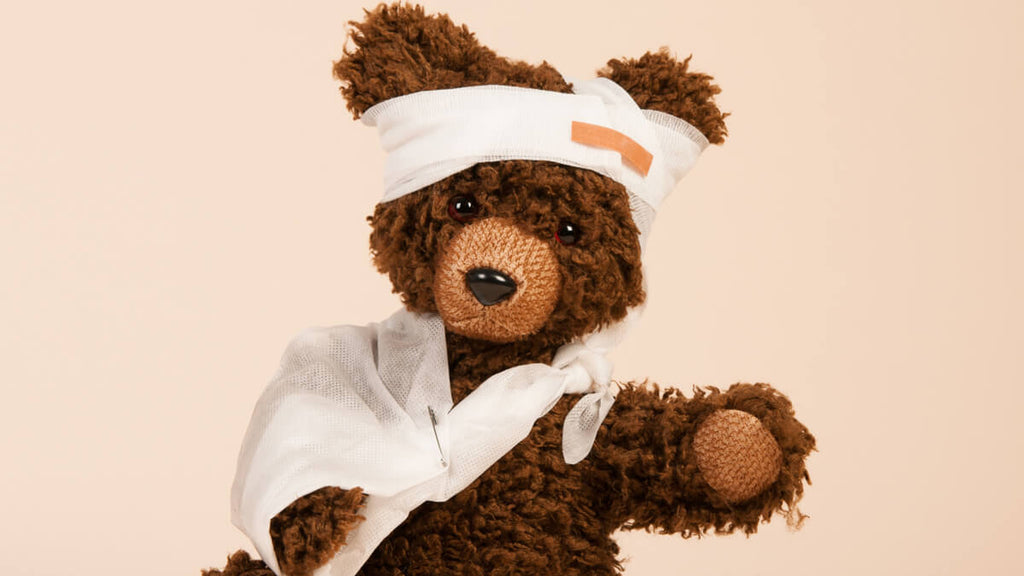
When it comes to babies and toddlers, safety is paramount – yet accidents happen faster than you think. Burns are among the most common and dangerous injuries in young children. Their skin is much thinner than that of adults, so burns develop more quickly and are often more severe. In this blog post, you’ll learn how to prevent burns, what first aid measures really work, and why fire safety should also be part of everyday family life.Common Causes of Burns in ChildrenMany burns don’t occur from open flames, but from everyday items that are often overlooked. Here are the most common hazards:
- Hot Liquids & Foods – Spilled tea or coffee, hot soups, or porridge can cause scalds quickly. Water at 60°C can cause serious injuries in just a few seconds.
- Stove & Oven – Children are curious and might touch hot stove plates or the oven door.
- Iron & Hair Dryer – These devices often stay hot for a long time after use and are easily accessible to children.
- Candles, Matches & Lighters – Little children are fascinated by flames and may reach for them.
- Power Outlets & Electrical Devices – A faulty hairdryer or a plugged-in charging cable can cause dangerous electrical burns.
- Sunburn – Excessive UV exposure is also a burn, which can be especially dangerous for babies.
- Fireworks & Sparklers – Even small firecrackers or sparklers can cause severe burns.
- Keep hot drinks & food out of reach – Never place cups on tablecloths or coffee tables.
- Install stove guards & turn pots to the back – This prevents children from accidentally touching a hot pot or pan.
- Make the bathroom safe – A scald protection for the shower or bathtub prevents water that’s too hot. The ideal temperature is a maximum of 37°C.
- Put away electrical devices after use – Don’t leave curling irons, straighteners, or irons unattended.
- Childproof electrical outlets – Special outlet covers prevent children from inserting objects.
- Store lighters & matches securely – They should never be in the hands of children.
- Take sun protection seriously – Babies should not be exposed to direct sunlight. Use UV clothing and sunscreen with high SPF.
- Explain fire safety playfully – Even toddlers can learn that "hot" is dangerous.
- Stay calm and reassure your child – Your child will sense your panic, so take deep breaths.
- Remove clothing, but only if it’s not stuck to the skin!
- Cool with lukewarm water (about 20°C, not ice cold!) – At least 10 minutes under running water. Ice or cold water can cause further damage to the skin.
- Unusual but effective: Urine – Urine contains urea, which cools and protects the skin. For contact burns (e.g., from hot water or an object, but no open wounds), fresh urine can be applied for 15–30 seconds. Important: Urine is only effective if applied immediately after the burn. Clean the area with lukewarm water afterward. Post-application is ineffective. For more serious burns, always seek a doctor!
- Don’t use home remedies! – Butter, flour, or toothpaste will only worsen the wound.
- Cover with sterile dressings – A burn should be covered with a sterile compress or, if necessary, with cling film.
- "Cold water always cools effectively." – Water that's too cold can cause hypothermia and interfere with the healing process.
- "Ice or cooling compresses relieve the pain." – Ice can cause frostbite and further damage the skin.
- "Cover wounds with a bandage." – Dry bandages can stick to the wound and delay healing.
- "Open burn blisters for faster healing." – Blisters protect the wound from infection and should not be opened on their own.
- "Home remedies like butter or flour help." – These substances worsen the wound and promote infections.
- Fire-extinguishing cuddle blanket – Safety meets comfort.
- Sustainable materials – Our blankets are made from PyroTex® fibers, which are free from harmful substances.
- Prevention as a lifestyle – Safety can be stylish and practical.




